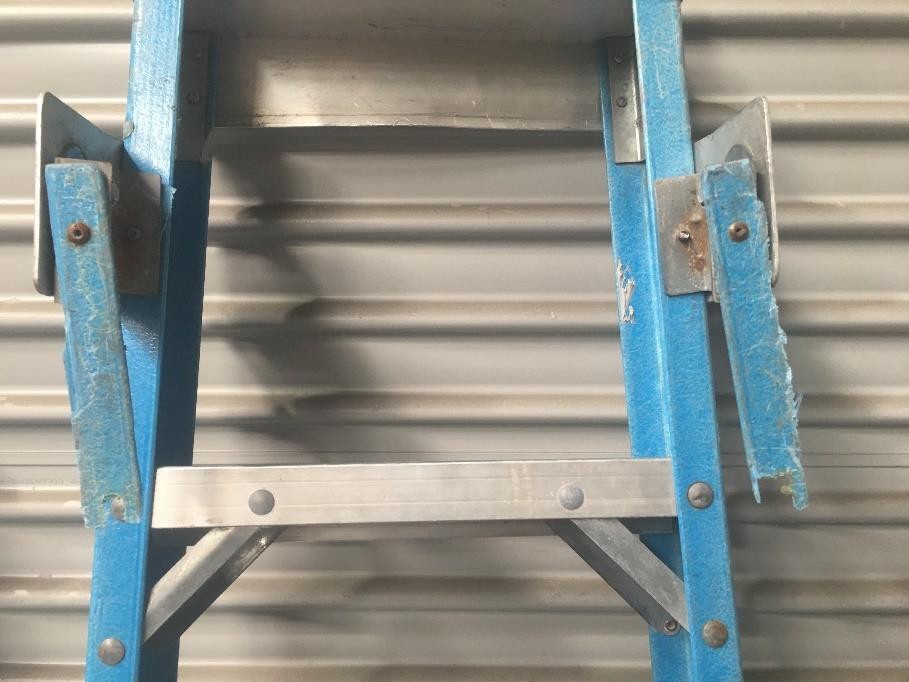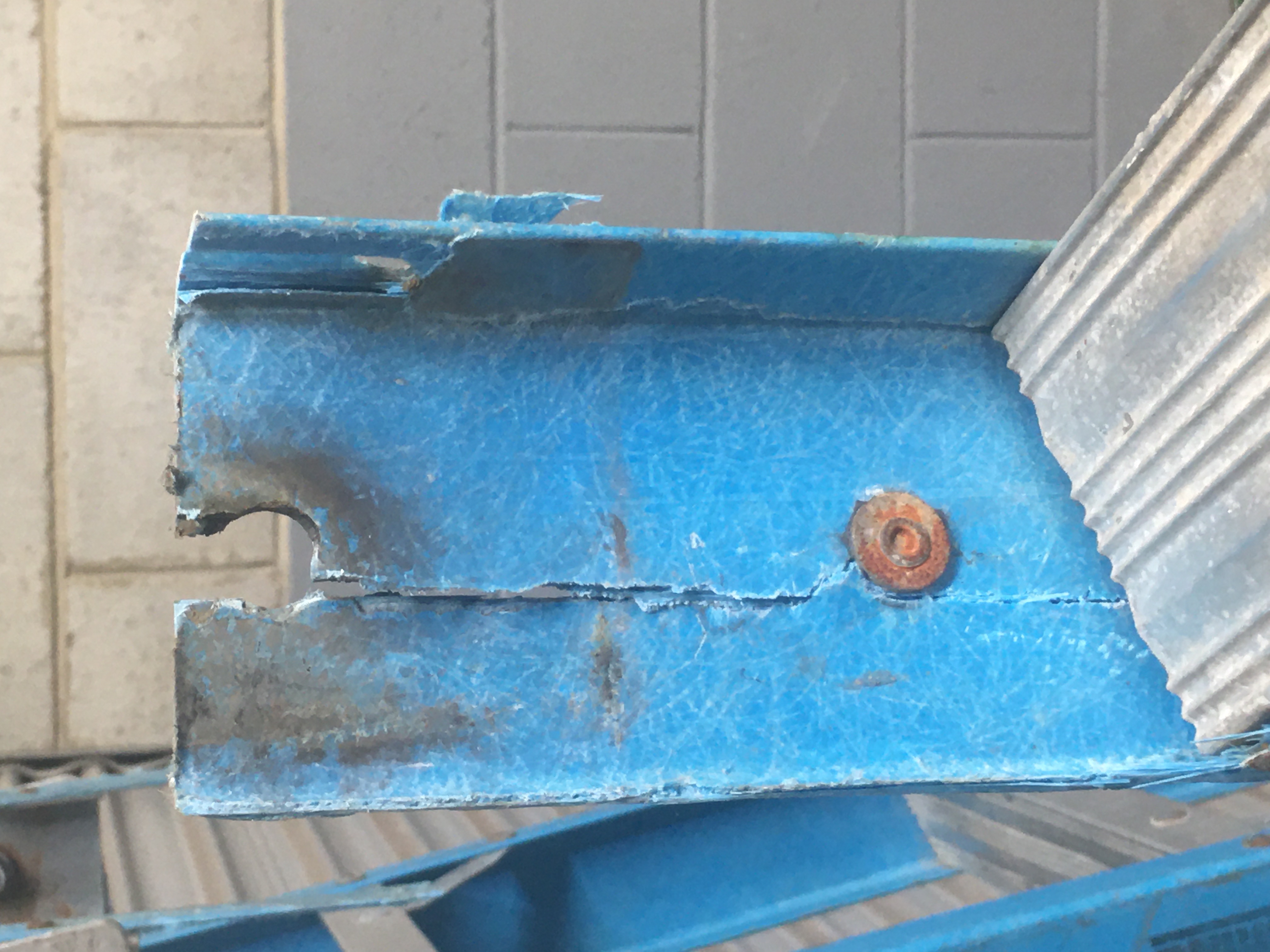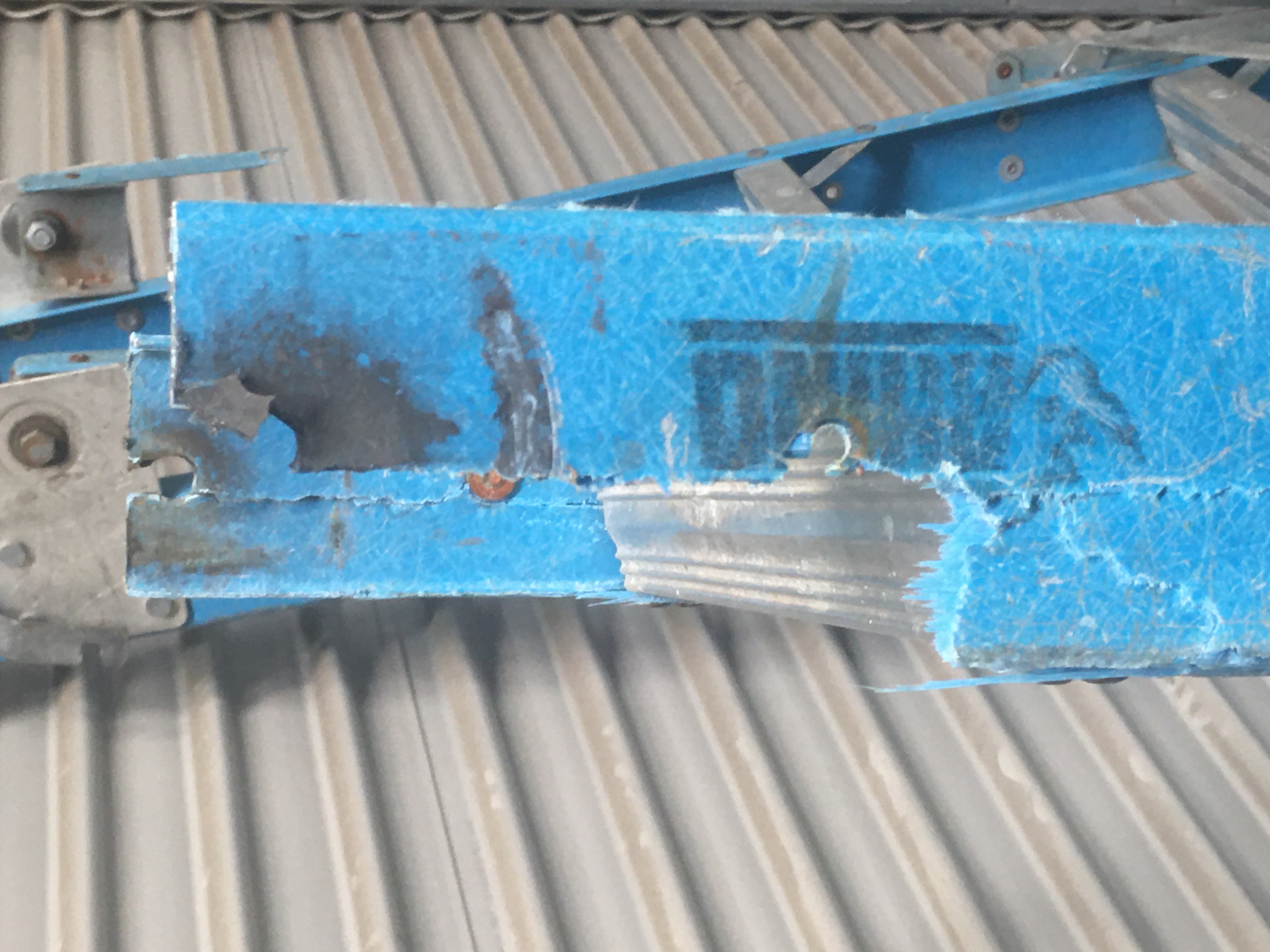Fibreglass ladder failure
Issued: 16/04/2020
Last Updated: 16/04/2020
Purpose
The purpose of this safety alert is to highlight the potential for degradation of fibreglass ladders that can lead to a structural failure.
It is important to:
- inspect the ladder before use
- store the ladder correctly, following the manufacturer's recommendations.
Background
In March 2020 a worker was seriously injured when a fibreglass ladder catastrophically failed.
The worker was coming down a 120 kilogram load-rated fibreglass dual purpose step ladder that was set up in its unfolded (straight) configuration when it snapped in two.
The failure occurred at the main hinge point, where the stiles contact the back of the top cap (remembering the ladder is approximately straight with the rear legs upside down). The break occurred through the fibreglass stiles. He fell approximately two metres, injuring his back.
Contributing factors
The ladder appears to have been several years old. There was some damage to it, including to the top cap which may have been caused by a significant impact or the ladder being dropped.
Inspection of fibreglass ladders or those that use plastics can be more difficult compared to metal ladders, as material degradation can be more of a problem. Close inspection of these types of ladders is imperative to check if any degradation or faults exist with the ladder.
Photographs 1, 2 and 3 show significant damage to the ladder to the point where two sections of the stile have been ripped off from their original position.
 Photograph 1 |
 Photograph 2 |  Photograph 3 |
Action required
Ladders should be checked frequently and maintained in good condition.
A ladder inspection should be made:
- when originally purchased, received or put into service
- before each use
- after mishaps, drops and impacts
- periodically
- to check for signs of UV degradation.
Always refer to the manufacturer's specifications for the safe use, inspection, maintenance and storage of portable ladders.
The inspection should include checking:
- the fibreglass has not started to separate, wear away or crack, especially around rivets and bolt holes
- for fibreglass 'blooming', where the glass fibres break through the surface of the fibreglass. This can be an indication that the material is degrading or is defective from manufacture. While blooming may not cause a significant reduction in strength, it will result in discomfort to the user from glass fibres in their skin and can reduce the electrical insulating properties of the ladder
- all bolts and rivets are present and secure
- there are no loose or cracked rungs or hinges
- for corrosion of members, bolts and rivets – both internal and external corrosion
- the integrity of rung/tread to stile connection and deferment flanges
- the free movement of all pivoting or rotating surfaces (these may need to be lubricated in accordance with the manufacturer's specifications)
- the ladder feet are not excessively worn or missing and are the feet supplied by the manufacturer
- for repairs or replacement parts that do not look genuine.
When a defect is identified, the ladder should be marked and taken out of service for either repair by a competent person (i.e. the manufacturer or authorised agent) or destroyed. Defects include any missing or damaged parts on the ladder and alterations made to the original ladder design.
Further information
- AS/NZS Standard 1892.5: 2000 Portable ladders part 5: Selection, safe use and care
- Managing the risk of falls at workplaces Code of Practice 2021 (PDF, 3.9 MB)
- Managing the risks of plant in the workplace Code of Practice 2021 (PDF, 1.57 MB)